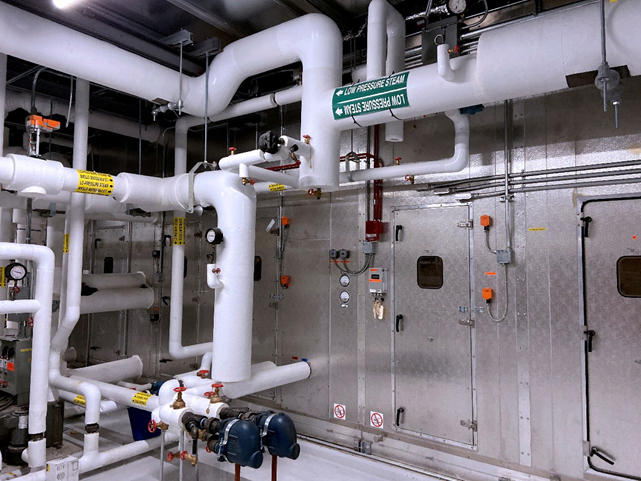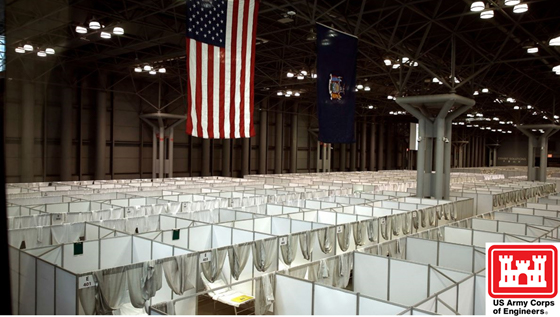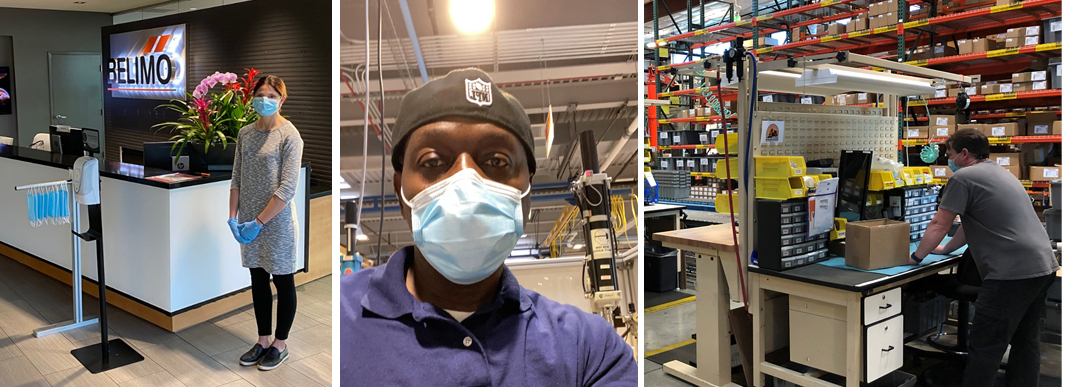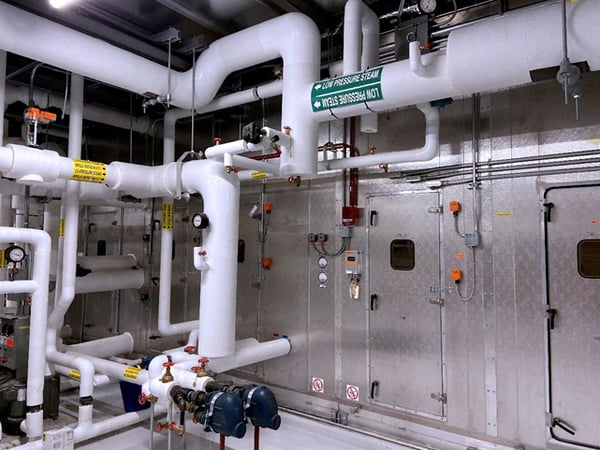How the COVID-19 Pandemic Will Change Office Spaces and Public Buildings
Reported by The CUT, As of June 15, more than 2 million people across every state, Washington, D.C., and four territories have tested positive for the disease, and more than 115,732 people with the virus have died in the U.S.1 New York City, the city we all enjoy, has been the epicenter of the COVID-19 pandemic in the US. Belimo helped to retrofit the interior of the Jacob K. Javits Convention Center for use as a field hospital. Other emergency hospital tents were erected throughout the city, including Central Park. Approximately 8.5 million New York City residence practiced social distancing by relocating their offices into their apartments and homes.
Working remotely for a long time has led builders and designers to rethink how to make comfortable, efficient, and safe environments. This pandemic has forced contractors, facility managers, builders, and building owners to refocus on a wide range of design issues such as sustainability, health, wellness, and hygiene in public spaces.
The importance of infrastructures and HVAC technologies is more critical. The Centers for Disease Control (CDC) guidelines recommend that building owners and facilities managers reduce disease transmission from airborne particles by improving the engineering controls for building ventilation systems to:
- Increase the percentage of outdoor air inside their buildings
- Increase ventilation rates
ASHRAE developed the following statements in response to widening false statements surrounding HVAC systems. ASHRAE officially opposes the advice not to run residential or commercial HVAC systems and asserts that keeping air conditioners on during this time can help control the spread of the virus. The official statements are below.
ASHRAE's statement on the airborne transmission of SARS-CoV-2/COVID-19
Transmission of SARS-CoV-2 through the air is sufficiently likely that airborne exposure to the virus should be controlled. Changes to building operations, including the operation of heating, ventilating, and air-conditioning systems, can reduce airborne exposures.
ASHRAE's statement on the operation of heating, ventilating, and air-conditioning systems to reduce SARS-CoV-2/COVID-19 transmission
Ventilation and filtration provided by heating, ventilating, and air-conditioning systems can reduce the airborne concentration of SARS-CoV-2 and thus the risk of transmission through the air. Unconditioned spaces can cause thermal stress to people that may be directly life threatening, and that may also lower resistance to infection. In general, disabling of heating, ventilating, and air-conditioning systems is not a recommended measure to reduce the transmission of the virus.1
HVAC filters, along with other strategies, help to reduce virus transmission while removing other air contaminants that may have health effects.
An Emerging Issues Brief was developed by ASHRAE's Environmental Health Committee to support the statements noted above. ASHRAE also created the Epidemic Task Force, which is comprised of experts to address the relationship between the spread of the disease and HVAC in buildings during the current pandemic and future epidemics.
The current guidelines from the Centers for Disease Control (CDC) and the American Society of Heating, Refrigeration, and Air-conditioning Engineers (ASHRAE) recommend reducing disease transmission from airborne particles by increasing the outdoor air ventilation and filtration efficiency. These recommendations are vague and do not consider the location of the facility. For example, a building in NYC should not be designed the same as a building in Florida. The climates are drastically different.
CDC and ASHRAE are recommending up to 100% Outdoor Air (OA) to dilute the air. This will have a significant energy impact as energy costs will increase by 50-100%.
Why? Outdoor air during the warm weather months tends to hold more moisture, so increasing the amount of outdoor air intake will ultimately increase the amount of relative humidity in the controlled space. ASHRAE Standard 8 recommends occupied indoor spaces be limited to a maximum dew point temperature of 60°F, which translates to a dry-bulb temperature of between 72°F and 78°F with a maximum relative humidity of 60%.
Beyond comfort, the increase in relative humidity above 60% increases the formation of mold and mildew, which ultimately creates an increased health risk to the occupants. Continued high interior relative humidity levels can cause building and property damage and make for an uncomfortable environment.
This results in additional mechanical cooling as the space thermostats setpoints will be lowered, so the mechanical air conditioning will run longer to remove the excess moisture. In the past, it has been commonplace to locate a single humidity sensor (dry bulb sensor) in the interior to control the relative humidity. A solution to the single relative humidity approach would be the addition of a relative humidity, temperature, and occupancy sensor in each zone of the interior. This would allow the control system to be programmed to redirect air from partially occupied or unoccupied spaces to maximize the ventilation in the occupied zones and ultimately, optimize the system's energy efficiency. Individual zone controls can ensure the recommended dew point temperatures are maintained to prevent the growth of mold and mildew while maintaining occupant comfort.
Changing seasons, during cold weather months, the increase of outdoor air ventilation to 100% will cause an increase in heating since the mechanical equipment will be required to temper the outdoor air intake to maintain the required space conditions. Again, the use of zoned temperature control will maintain comfort levels with an eye toward energy efficiency.
Of course, the use of economizer controls to take advantage of 'free' cooling and maximize the airflow should never be discouraged. Still, it is essential in today's COVID-19 environment to utilize the available options on the market to stay safe while acknowledging the increased cost of energy.
Endnotes
1 The CUT, Everything to Know About the Coronavirus in the United States
2 ASHRAE Issues Statements on Relationship Between COVID-19 and HVAC in Buildings.
The New York District of the Army Corps of Engineers has completed its conversion of the 1,800,000-square-foot Jacob K. Javits Convention Center in New York City into an alternate care facility for more than 2,000 non-COVID-19 patients.




